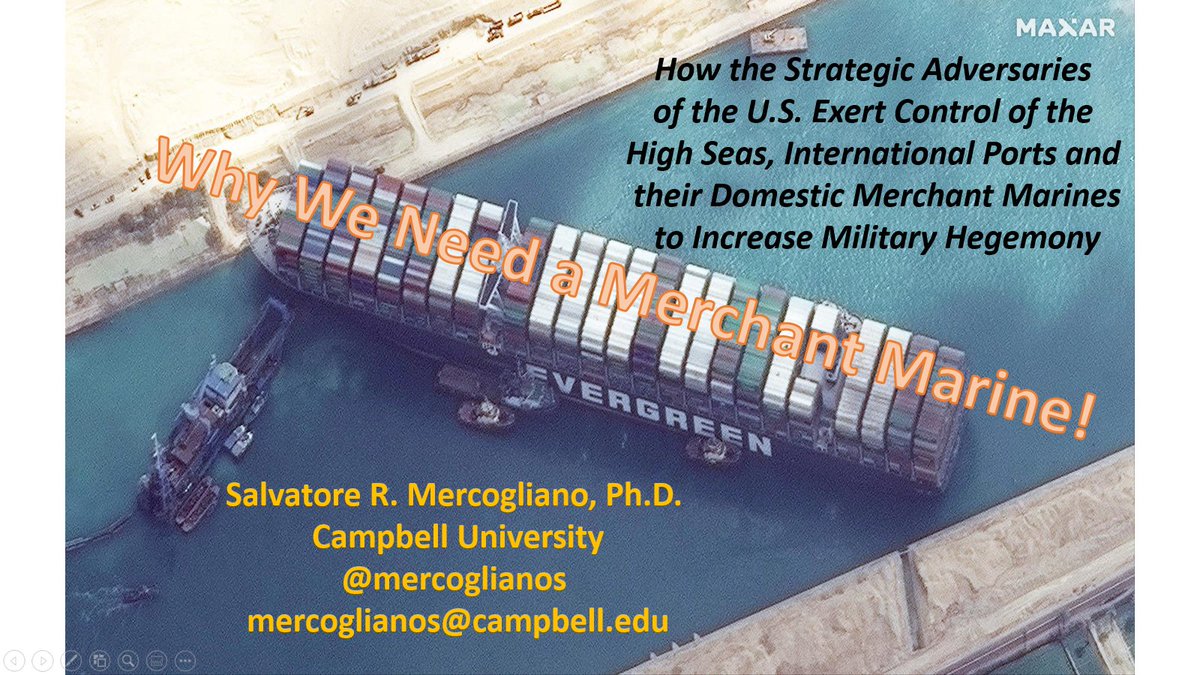
My favorite week of the year!
It is Strategic #Sealift week @CIMSEC. Every day, new pieces drop and thanks to @US_TRANSCOM in sponsoring the event.
Looking for some great ideas for @MSCSealift, @DOTMARAD & the merchant marine.
cimsec.org/strategic-seal…
It is Strategic #Sealift week @CIMSEC. Every day, new pieces drop and thanks to @US_TRANSCOM in sponsoring the event.
Looking for some great ideas for @MSCSealift, @DOTMARAD & the merchant marine.
cimsec.org/strategic-seal…
1/THE FOURTH ARM OF DEFENSE: AMERICA’S MERCHANT MARINERS
"Ocean-borne transport is largely taken for granted by the American public."
cimsec.org/the-fourth-arm…
"Ocean-borne transport is largely taken for granted by the American public."
cimsec.org/the-fourth-arm…
2/ACROSS THE EXPANSE: THE SEALIFT DILEMMA IN A WAR AGAINST CHINA
"The U.S. military must address its critical sealift vulnerabilities in fuel capacity, operational security, and vulnerability to uncommitted partners to win an expeditionary Sino-U.S. war."
cimsec.org/across-the-exp…
"The U.S. military must address its critical sealift vulnerabilities in fuel capacity, operational security, and vulnerability to uncommitted partners to win an expeditionary Sino-U.S. war."
cimsec.org/across-the-exp…
3/OBSOLESCENCE, CHOKEPOINTS, AND THE MARITIME MILITIA: FACING PRIMARY THREATS TO U.S. SEALIFT
"If the U.S. wishes to remain a global power with the ability to project influence anywhere on the globe...a robust sealift force...is a necessity."
cimsec.org/obsolescence-c…
"If the U.S. wishes to remain a global power with the ability to project influence anywhere on the globe...a robust sealift force...is a necessity."
cimsec.org/obsolescence-c…
4/RECAPITALIZING STRATEGIC SEALIFT SHOULD BE DOD’S NUMBER ONE MODERNIZATION PRIORITY
"Recapitalizing the government-owned portion of the strategic sealift force should be one of DoD’s topmost priorities."
cimsec.org/recapitalizing…
"Recapitalizing the government-owned portion of the strategic sealift force should be one of DoD’s topmost priorities."
cimsec.org/recapitalizing…
• • •
Missing some Tweet in this thread? You can try to
force a refresh







